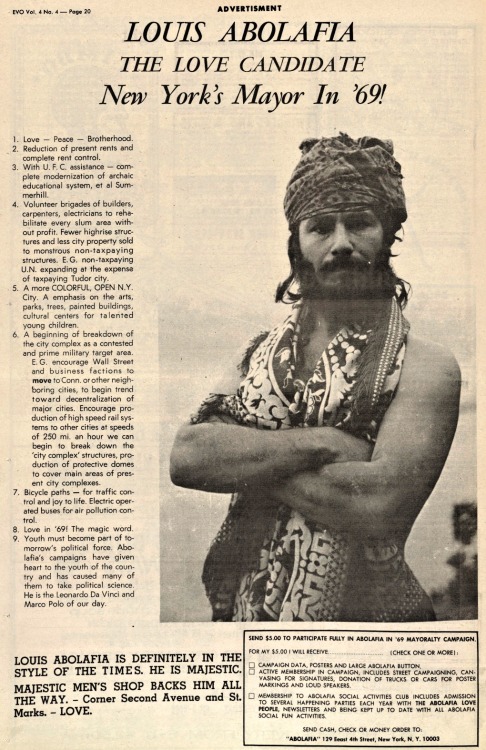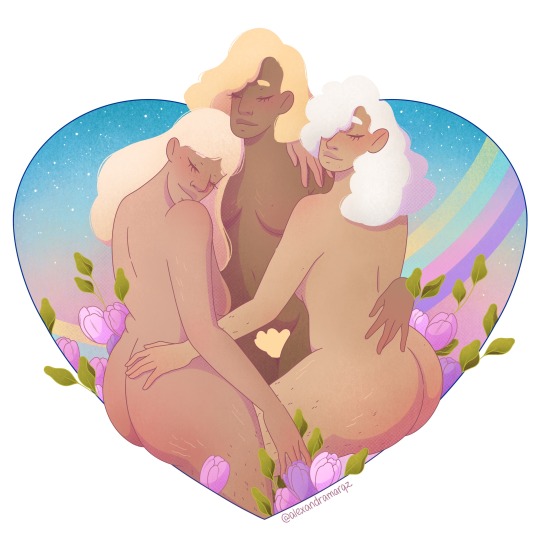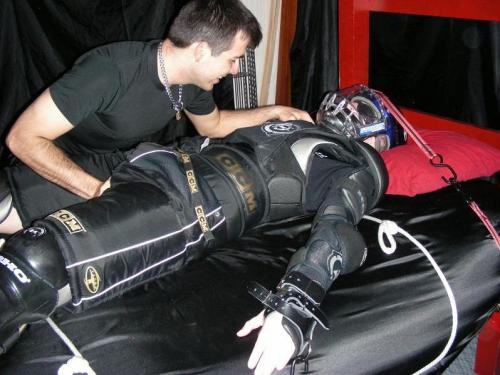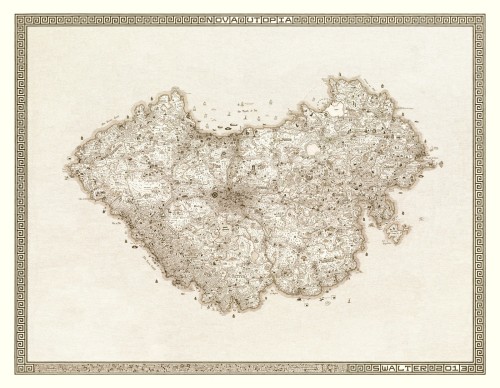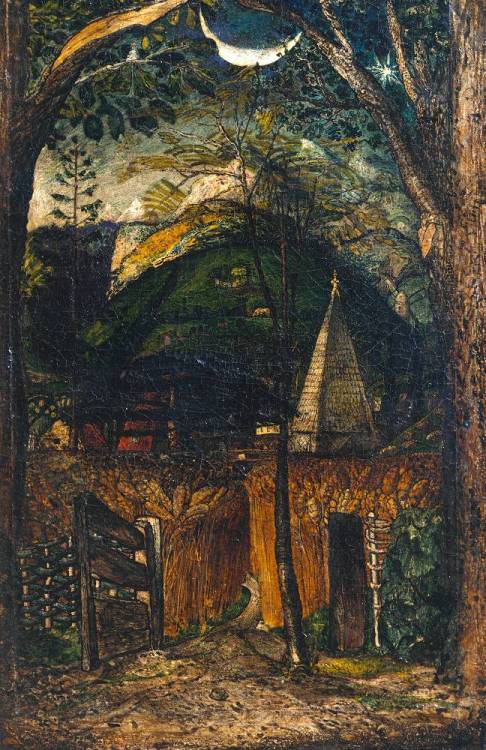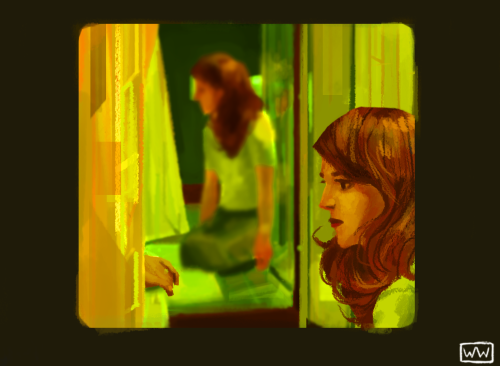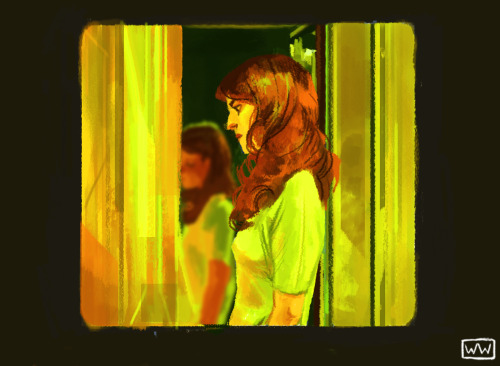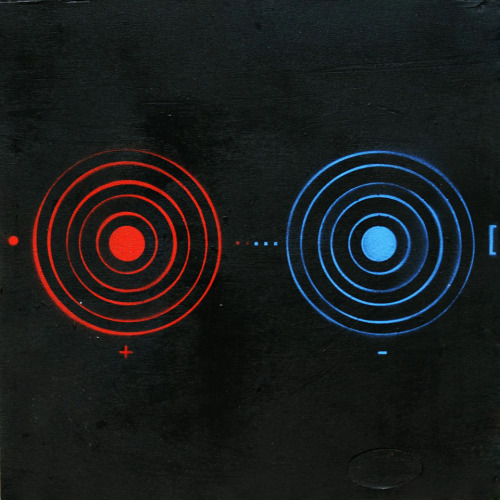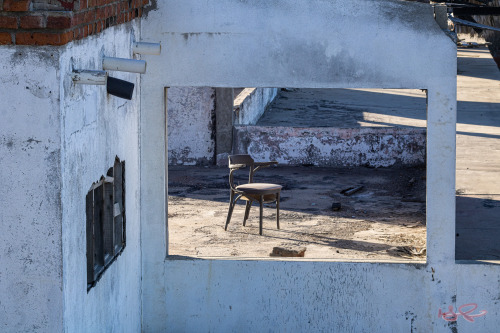#utopia
Here is the introduction of the first of the three main civilisations from my sci fi novel, the titular Spiral Empire itself. Please read my prologue/backstory first.
Thanks again to ZU’s Fanfic to Original Fiction pipeline thread!
The Spiral Empire, home of the Chie
The Spiral Empire itself started life as Timothy Zahn’s “Empire of the Hand”, an offshoot of the Galactic Empire led by Grand Admiral Thrawn, but later, added elements of Star Trek’s Federation, with some real world inspirations, including British Commonwealth constitutional monarchy, and Scandinavian-style socialism.
******
Origins
One of the colony ships racing to reach “New Earth” in the Alpha Centauri system was called the CANZUK, and was mostly comprised of between 200 000 - 300 000 colonists from the 4 countries of the proposed real life CANZUK trade organization – Canada, Australia, New Zealand and the United Kingdom. Its Captain was actually a distant (fictional) cousin of the British Commonwealth’s Royal Family, Captain Albert Windsor. He wasn’t a very high-ranking royal to begin with (no title), and had been pretty much ignored by his family due to his Autism, but that same diagnosis, combined with his Royal Navy experience, made him ideal to captain the CANZUK, and along with the rest of his small, autistic crew of about 10, to stay awake during the entire expected 50 year journey to Alpha Centauri (or, at least, as long as he would live).
After being sucked in by the “Planet Nine” wormhole (again, that may be a specific I have to change), one of the colony ships was spat out right into the path of solar flare. The flare knocked out the computer systems running the colonists’ hibernation pods (nicknamed ‘cryo-sleep’ despite the fact that no one is actually frozen). For the crew, still recovering from the unexpected trip through the wormhole, it was now a race against time to get as many pods as possible opened up manually, and save the colonists before they suffocated. Captain Windsor made the difficult decision to prioritize waking the most “vital” people – those who would be able to wake up and help with the current situation – first. So he and the crew rushed to wake doctors and other medical personnel, engineers and scientists and their immediate families first, all the while the pilot struggled to keep the ship flying, and the chief engineer tried to buy the pods more time. As the situation grew more dire, they started waking any colonists they could reach with skills that could be useful to start life on a new world, like farmers, teachers, and as many kids as they could. Even with the help of the awakened colonists, they were only able to save about 3000-5000 people.
I chose this number based on the Toba Catastrophe theory, which proposes that the human population reached as low as 1000-10000 individuals about 75 000 years ago after the eruption of a supervolcano and subsequent volcanic winter lasting about a decade. It’s also a little more than the lowest number of humans required to maintain a viable population.
To put this into perspective, my high school had about 2000 students. Most sports stadiums can hold a lot more.
As far as the survivors were concerned, they were all that was left of humanity.
Because of the prioritizing criteria that was used, a lot of the survivors, like the crew, were either autistic themselves (a *lot* of engineers/scientists are on the spectrum, whether they’ve been formally diagnosed or not), or had a higher than average chance of having autistic kids themselves. Autism is something that runs in families. In that way, it’s like the Force. I have it, my son has it, members of my extended family have it, and I’m pretty sure my grandfather – an electrical engineer – has it as well.
Fast forward 500 years, and you have a society where the majority of people are Autistic. Therefore, that is what is normal and expected in their society, and over time, the CANZUK survivors’ descendants build their new civilisation accordingly. It’s the people our world considers “neurotypical” who are considered disabled in theirs.
The Chie themselves
For the first time, Autistic people were free to build their own society, one largely free from the social expectations of neurotypical humans. Over time, they began to blame the old attitudes of humanity-that-was for the over-exploitation of Earth to begin with, for allowing greed and inaction to ruin the old planet. The survivors of the CANZUK and their descendants decided to learn from those mistakes, but still distance themselves from the past. Over time, they rejected the term “human” all together, and claimed a new name: “Chie”. This is derived from the concepts of “chii” or “ki” = energy, and illustrated their determination to build a new society, free from the bad habits of the old.
though they did develop their own traditions. By the present day of my novel, it’s considered customary for Chie to have their ears surgically pointed when they discover their “talent” – the intense, autistic special interest they develop into a career path. They chose pointed ears to symbolically become closer to fictional “better” species, like Elves or Vulcans, and further reject the old.
Some Chie even choose genetic engineering, so their kids will be born with already-pointed ears, though this isn’t a very common practice just yet.
Also, the name “Chie” sounds more like a cool alien race, rather than the medical, clinical language surrounding autism. They’re not “disabled”. From their way of thinking, they’re the evolution of humanity.
Because of their Autistic bluntness, their hyperfixation on their special interests (which usually are their jobs), and their distain for old Earth, Chie can come across as arrogant to citizens of the other two human civilisations. The reality is, however, that Chie are just as varied as any other group of humanity.
Geography
The survivors of the CANZUK found themselves in a solar system with a single orange star, slightly smaller and cooler than our sun. They only planet within the star’s habitable zone was a gas giant, a beautiful world that looked like a swirling, blue and white marble, with an enormous ring system that put Saturn’s to shame. The planet was at first called “Newton”, keeping with what would be the Chie’s habit of naming places after famous scientists, but because of its beautiful swirling clouds and rings, it wouldn’t be long before it’s known by a more suitable name, “Spiral”.
Luckily, orbiting that gas giant are two moons, one about the size of Venus, another the size of Mars, each with oxygen/nitrogen mix atmospheres. With a little research, it’s determined they are suitable for colonization, and the larger of the two moons, with a more temperate overall climate, is chosen.
That first moon turns out to have a biosphere about equivalent to Earth’s late Cretaceous period, with similar (though obviously not identical) lifeforms. The colonists choose an oceanside area, with a large hill further from the shore, to colonize first (similar to to the lakeside “lower city” and community on top of the “mountain” - the Niagara Escarpment - that makes up the geography of Hamilton, Ontario.) This becomes the capital city (still thinking of a name), of the moon Galileo.
The second moon is almost entirely covered by ice sheets, except for temperate zone near the equator, where deciduous forests grow. It’s not settled until about a century later. Still, winters there are long and hard, but the residents of the mostly underground city, Winterpeg, on the moon Darwin, take it as a point of pride. (I’m basing it on Winnipeg, Manitoba, obviously, combined with the PATH system in Toronto).
Life on Galileo and Darwin shares a common origin, but it is unclear as to on which moon exactly that took place. Still, both worlds could be considered “island ecosystems” in a greater whole.
Spiral itself is always visible from both the capital on Galileo, and Winterpeg on Darwin. Both moons are tidally locked so that one side always faces the planet (like most gas giant moons, and Luna, in the Sol System). It makes for an absolutely astonishing night sky.
Something akin to this (only without the ugly foreground):

With further understanding of wormholes and innovations in spaceship design and use, Chie began venturing beyond their own solar system shortly before re-establishing contact with the other two human civilisations.
Most by the novel’s present day, there are two notable “colonies” (though one is more described as a “member-province”) beyond the Spiral Solar System. One is Erebus, the aforementioned home of the alien race known as the Dragons, who chose to join the Spiral Empire, as protection from the Confederacy (as will be described in more detail in the Dragons’ section). The second is the (name undecided) colony, little more than a small town, that suffered the attack from the bio-weapon.
Chie Sociology/Economy
The CANZUK survivors felt immense guilt for being unable to save their shipmates. While the ship itself serves as a “tomb” of sorts for the pods at first, after the colony is more established, they build an actual pyramid and transfer the pods/coffins to Galileo over time.
This cultural guilt evolves into a sense of responsibility to all survivors, and their descendants. They are all “shipmates”, and shipmates don’t let shipmates suffer unnecessarily.
This, combined with the increased empathy common to Autistic people, makes for a very socialist society. While money does exist, it’s considered something for “extras”. All peoples’ basic needs are accounted for. Basic food, housing and water is provided for everyone, as well as education and medical care. There is no homelessness, no hunger, and very little crime, with a decent standard of living maintained for all, the same as crewmates on a space ship would have. On the flip side, there are no billionaires, and no “mega-corps”. Larger companies are possible, but they are highly regulated by the Crown, with strong unions to ensure fair treatment of their workforces (though with Chie mentality, that’s more a holdover from older ways of doing things than really necessary). Automation of mundane, boring tasks is also common, so that Chie are free to pursue their own interests, without economic pressure to take on jobs they won’t enjoy just to pay the bills.
Chie value information, and the ability to pursue their interests unimpeded, over material gains, so there simply isn’t the greed for “stuff” that there was on Earth. Or for social status. Most Chie could not possibly care less what the “Joneses” are doing, so feel little to no societal pressure to “keep up to them”. If someone wants a bigger house, for example, than what is usually provided, they can either save up their currency and buy one, or petition the local government, listing why they *need* a bigger place.
Most Chie live in apartment/townhouse complexes, usually 4-6 high rise buildings surrounding a central courtyard, with community gardens, playgrounds, a swimming pool, and indoor facilities like gyms, playrooms, and of course libraries, common and free to all residents to use. Small businesses like shops and restaurants prefer to be within walking distance of a number of these communities. Groceries and other necessities are often delivered.
Most Chie do not own their own vehicles, unless they need them for work. Roads subsequently tend to be small, with cycling (adult tricycles are popular) and walking common, and great public transportation options, consisting of train/subway networks in-city. Some trains also service outlying communities, though another method of transportation is more common (see below). The only ground-vehicles you’re likely to see in a Chie city are electric business trucks/vans, emergency response vehicles, bookmobiles, and the occasional bus.
With a gas giant planet, literally a giant ball of mostly hydrogen, within figurative arms’ reach, the Chie economy is based on hydrogen, a relatively clean fuel source, also useful in nuclear fusion as the main power source for a lot of their spaceships. A lot of wind, hydro, and geothermal-based electricity is generated as well. Things like plastics are made of carefully farmed, plant-based materials (often agricultural waste), and are therefore biodegradable. Coal and Oil only exists in a few museum samples, as curios and warnings, with Chie children often wondering why these dirty, gross geological specimens were considered so important in the first place.
Gas giants also have a high concentration of atmospheric helium, and the Chie were quick to take advantage. Airships are a common sight on Galileo, with Zeppelins being the most common transportation system both for people and cargo between the often far-flung cities. Even modern airships can carry far more than a standard transport truck and travel at similar, if not faster, speeds. Subsequently, Galileo does *not* have highways. They don’t need them. Airship “cruise liners” are also popular, being far cleaner than their ocean-going equivalents, and offering great views of the many beautiful, untouched natural landscapes of the moon, with little to no disturbance of the wildlife therein.
Chie have a strong conservationist culture, and are tend to be highly empathic towards animals. Factory farms don’t exist, and most Chie, if they do eat meat, prefer the lab-grown kind. Pets are popular, both from imported Earth species, and the friendlier/smaller species of native animals. Habitat destruction for resources on the scale found on old Earth is simply unthinkable, as is animal poaching.
The Chie education system is built around encouraging a child’s special interests (of which they can have several over time), and encouraging them to build a career path around them. Universal pre-K childcare is a given. Grade school kids are encouraged in a rounded education, with the special interests often playing into their lessons (like a kid interested in trains would be taught to read, using books on trains, for example). A student’s special interests will be tracked over time, and guidance councilors will take into account what they might all have in common when making recommendations to students.
Secondary school students enjoy at least 4 semesters of mentor/apprenticeship programs where they can try out different career paths in small groups of no more than 5 students, during their second last and final years, often in exciting fields like spending a semester on a nature expedition. This practical experience helps them decide on their college/university educations, again which are universal, at no cost to the student. Co-op placements in chosen fields are standard. Teachers, professors and mentors are well-paid and highly respected. Associate or Bachelor degrees are actually respected, and because of high Chie education standards, that’s all that’s usually needed for most professions, though Chie enjoy lifelong learning, often taking refresher courses throughout their careers.
The Chie ability to focus on their special interests is thus the cornerstone of their education and society.
Spiral Empire Government
During the first decades of their settlement on Galileo, the survivors of the CANZUK naturally turned to Captain Windsor for leadership, and while the colony focused on survival, that was sufficient. However, as the number of people grew, a more formal system of government was needed. The people turned to the govenments of their old countries back on Earth, a federal constitutional monarchy, with some changes, as a basis, and invited the aging Captain Windsor to be the first Emperor (the title chosen for its grandeur, and because “Spiral Empire” sounds better than “Spiral Kingdom”), both because of his leadership, and because of his family’s history.
Captain Windsor reluctantly agreed, but with a twist. The Spiral Empire’s monarchy is *not* hereditary. Windsor remembered full well the effect such a system had on his own family, and didn’t want to inflict that on his children and grandchildren. Instead, the heir to the throne is chosen from a small group of exceptional Spiral citizens, with the candidates voted upon by Parliament. If they accept, they are then appointed to the role of “Crown Prince/Princess” (little more than a title), until the reigning Emperor/Empress’ death or abdication/retirement. This is similar to how the position of Governor General is (supposed) to be chosen in Canada.
The Emperor/Empress’ spouse and children are not afforded any titles of their own. “Prince/Princess” is reserved for the aforementioned Heir, and also for the Emperor/Empress’ local representatives in provincial parliaments (similar to the Canadian provincial Lieutenant Governors)
Actual governance of the Empire is performed by democratically-elected Members of Parliament, with the Prime Minister as Head of Government. The Emperor/Empress, however, is responsible for opening/closing sessions of Parliament, and performing other symbolic roles. They can also, however, act as the final veto in deadlocked laws (not that they have to exercise that power all that often), and do have the power to remove an incompetent Prime Minister from office (again, not that that’s ever been an issue). Likewise, Parliament as a whole can remove an incompetent Emperor/Empress from office, though such a drastic measure would require a general referendum, and has never been necessary.
Parliament itself usually takes place on a spherical space station, the Parliamentary Orb, that orbits Spiral between Galileo and Darwin’s orbital paths. The station also doubles as an metoer defense platform, as such a crowded ring system often has wayward rocks that need to be vapourized to prevent them from hitting the two inhabited moons.
(no points for guessing what the Parliamentary Orb started out as in my old Star Wars fanfic)
The Emperor/Empress attends weekly meetings with the Prime Minister to discuss governance of the Empire, just as Queen Elizabeth meets weekly with the British PM in real life. Also, the Armed Forces swear allegiance to the Crown. With such an important symbolic role, the Emperor/Empress is also the most important international representative of the Spiral Empire.
The current Empress of the Spiral Empire in the present day of my novel is Xelarra Secord, a native of Winterpeg, Darwin, librarian and expert linguist, who spent 20 years on Erebus, helping to learn to communicate with the Dragons, and encouraging their application to join the Empire when they asked her to do so. She was therefore instrumental in arranging the first formal alliance between a human and alien government in known history.
(Xelarra started out life as a Star Wars fanfic OC of mine, the Chiss wife of Grand Admiral Thrawn. Her surname is in honour of Laura Secord, a historical Canadian heroine of the War of 1812)
Spiral Empire Armed Forces/Space Exploration
The head of the Spiral Empire’s armed forces (mainly the space Navy, with a small army) is the Grand Admiral, who wears a deep, purple uniform. The current Grand Admiral, Ophelia Aldrin, commands from her flagship, the HMS Renaissance II. The previous Grand Admiral, Saito Brock, husband of Empress Xelarra, was lost with all hands aboard the first Renaissance a number of years before the present day of my novel.
(Aldrin is basically an expy of General Olivier Armstrong from Fullmetal Alchemist. Brock was, obviously, Grand Admiral Thrawn. Like his wife, he takes his name from a hero of the War of 1812, Sir Issac Brock. I attended Brock University myself, so it’s a double reference).
Imperial Forces personnel excel at tactics and space combat, including zero-g training. Chie are reluctant to go to war, but will defend themselves when pushed. They prefer solutions to military problems that minimize loss of life on both sides, but will be ruthlessly practical when they have to be.
Surgite,Latin for “Push On!” is the Imperial Forces’ official motto. (Also Brock Univesity’s motto)
Imperial Forces starships use the designation, “HMS” for “Her/His Majesty’s Ship”, same as the UK’s Royal Navy (the Canadian HMCS is similar).
The Imperial Forces themselves concentrate on defence of the home solar system. Space exploration is carried out by the Explorer Corps.
The Explorer corps is nominally military, but the ships have a far more casual feel to them. Their primary mission is to seek out new wormholes and determine whether or not they are stable, where they go, and study what’s found on the other side.
They have fairly small crews, usually of about 50 crewmembers, and part of the ship spins for centrifugal force gravity. They’re also equipped with modular docking sections, so that small ships/shuttles of different kinds can attach to the main ship. The primary power source for the ships are nuclear fusion generators, though the primary propulsion system utilizes solar sails that can push along vessels at up to about 20% of the Speed of Light.
Crew quarters, hydroponics, the sick bay, and most recreational facilities are located in the spinning Habitat section (I’m still deciding whether that will be a ring, or the inner edge of a roughly cylindrical ship). The bridge and engineering are located near the centre of the rotational axis, and are thus in zero g, as are most cargo sections. The observation deck (the only part of the ship with real windows – cameras/monitors are used elsewhere) is likewise in zero G.
Explorer ships use the designation “RRS”, for “Royal Research Ship” (similar to RSS Sir David Attenborough in real life). They’re usually named after notable historical scientific ships, or scientists. The main plot of my novel involves the Explorer ship, the RSS Beagle (named after Charles Darwin’s ship – though this isn’t set in stone. If you can think of a better name, please let me know).
Interactions with the Confederacy and Machina
The Spiral Empire first made contact with the Confederacy, and were mildly disappointed to discover they were fellow humans, instead of a new alien race. The Confederacy took that pretty hard. As baseline humans, the Chie regard the Confederacy with some suspicion, and reject their capitalist ways, in such opposition to the Chie’s socialist society. Nevertheless, the Chie maintain an uneasy peace and mostly open trade with the Confederacy. This is because of two reasons:
Firstly, there are a lot of potential Chie in Confederacy space, and Spiral wants to keep open the possibility of those Chie resettling in their space. There are small groups of Chie scattered around the Confederacy who actually run “immigration chapters”, as in they identify potential Chie, and help them emigrate to Spiral. These can range from fairly open, to “underground railroads”, depending on the current international situations.
Cooperation with the Confederacy has led to join projects, but they often don’t go too well. The most notable failure was the Erebus project, which started out as joint colony between the Confederacy and the Spiral Empire. With the discovery of the Dragons’ sapience, Imperial law stated that all colonization efforts should immediately cease, but the Confederacy didn’t want to lose their “investment”, regardless of the sapience of the native population of the planet, or the laws of their “business partners”. The Dragons, with the Chie’s help, later forced the Confederacy off their world, and invited the Chie to stay for Erebus’ protection. (this will be described further in the section on the Dragons). Since the Erebus incident, the Confederacy, especially their current, rather boorish president, has been more overt at their distain for the “alien lovers” who “went against their own species”.
Chie often wear toques or other ear-concealing garments to keep from drawing attention to themselves while in Confederacy space.
The second reason the Chie continue to tolerate the Confederacy is because the wormhole leading to the Machina solar system is located in Confederacy space. If they cut off all contact with the Confederacy, the Chie would also cut off contact with the more agreeable cyborgs.
In contrast to the Confederacy, the Machina get along quite well with the Chie. Both peoples have a similar history, with both being single “Planet Nine” colony ships that ended up on their own, and faced challenges. Chie usually react to Machina cybernetics with interest (and delight), and often consider even neurotypical Machina “honourary Chie”. Both peoples put a great deal of emphasis on science and exploration, and both are generally accepting of the others’ differences. Chie and Machina frequently collaborate on projects, and Machina often serve on Chie Explorer ships.
The Machina leader, the Deus Ex, is also quite a close friend and ally to Empress Xelarra. While most Spiral Empire citizens and Machina prefer if their civilisations remain separate, there is a small but growing minority in both populations calling for unification.
Notable Chie
Emperor Albert Windsor – Captain of the CANZUK, first Spiral Emperor
Empress Xelarra Secord – current Spiral Empress
Grand Admiral Saito Brock – Former Grand Admiral of the Imperial Forces, lost in space.
Grand Admiral Ophelia Aldrin – Current Grand Admiral of the Imperial Forces.
Prime Minister Gilad Layton – Prime Minister of the Spiral Empire
Captain Zair Secord-Brock – Captain of the Explorer Ship, the RRS Beagle. Owner of Crewman, the ship’s cat.
Lana (still figuring out last name) – protagonist. Former Confederacy citizen who discovers she’s actually Chie, and finds herself in the middle of the bio-attack plot.
Anastaria (Ana) Burnell – Astrophysics grad student aboard the Beagle
Neela Drakesdaughter – Pilot/Assistant Engineer aboard the Beagle. Adopted daughter of Gorbash, the Beagle’s Dragon Chief Engineer
Leo Rose – IT specialist aboard the Beagle. Boyfriend/Husband (not sure which yet) of Neela. Zair’s best friend since childhood. He’s considered “disabled” (in that he’s what RL would consider neurotypical)
Proxima Utopia. A world atlas of utopias – to be considered in the era of post-everything.
Perhaps following a cycle (and anticipation) of global crisis developing today, architecture finds itself again drawn to utopias. However, as today our understanding of modernities has become multi-centered and simultaneous, we are witnessing also several deviant ways in how future societies are being pursued. “Proxima Utopia” represents a project for an atlas that seeks to provide speculative cartography and imagery for these developments. It is not as such a “mappa mundi”, consisting of what we currently know of the world, but more of a design-led inquiry into the “other” directions that global development might take – with or without the benevolent and harmonious past understandings of utopias. While not potentially desirable, the scenes discussed in the atlas seem yet plausible, deriving from current global politics, power relations, economy, surveillance, the post-internet and the looming ecological changes – the real contexts of future architecture.
From Proxima Utopia (2016) by Selim for Future Architecture Platform.
Post link
I let myself get wrapped up in yesterday and I got angry at a mountain of things. Things that wont change, things that cant change and things that are so damn hard to change.
You start to get the overwhelming feeling that you’re fighting a losing battle against Ignorance… and it wears you down!
I was so angry before I even sat down to watch the film Utopia, which is unsettling to put it mildly but was nothing i didn’t expect to see. Point is I had a shitty day but it turned around and as i was reflecting last night, i realised its the same thing that always turns my day around.
I got reminded of Vincent Lingiari and the Wave Hill walk off… I know this story inside out, but it always stops me in my tracks and makes me reflect - firstly because of the collective sense of unity and belief from the workers, their families and communities that they could change what needed to be changed and that they didn’t stop until they got what they were asking for - the Wave Hill walk off is still the longest strike in Australian history.
Then there is Vincent Lingiari who to me represents the type of leader that anyone black or white should aspire to be - sadly our kids still don’t learn about him in school - they learn about MLK and Mandela but not Lingiari. You know how people say that this person or that person didn’t know at the time that there actions would continue to change peoples lives… Lingiari to me is different, even though he was a humble man, I always feel like he did know that what happened at Wave Hill would continue to be a catalyst for change for Indigenous people for years to come.
There was some footage shown from the walk off that i cant recall if I’ve ever seen before, but yesterday it really captured me - the reporter was asking one man about what they wanted etc, then he asked him if all the families and workers supported them, the man said yes, he asked if communities supported them and the man said yes, then he asked if the whole of the Northern Territory would support them and the man said yes and that was it.
The thing that inspires me most about Wave Hill is that today - in my lifetime - I know men and women who are leaders like Lingiari, they work tirelessly because they know that change in our communities will happen eventually and they know that they are supported by our communities.
Im paraphrasing here but one old aunty was responding about racism and she said that the reason we don’t respond with violence and the reason we keep moving is because we have too much dignity. As soon as she said it, it picked me straight up.
Truth is Indigenous people aren’t defined by stereotypes, ignorance, struggle, statistics or anything that the media says. We are defined by two things only Resistance and Dignity.
I got more then a few facebook deletions yesterday - but I wont apologise for the things that I write, its how I feel and not intended to offend you. My whole identity is as an Aboriginal woman and as an Aboriginal and as a woman, that may seem like double dutch but its true, these 3 things sit on par with each other at the top. Its difficult to explain to people who live with the idea that everyone is Australian that the part of me that identifies as Australian is very insignificant - to me its 9 or 10 letters that you fill in a box - nationalism has never appealed to me, i believe that the world is a bigger place and the only things of importance here are the people in it and the land we live on - not boarders.
I’m not saying that I’m better than you, Im saying that to me being Aboriginal is more than being Australian, and yesterday I was proud of being Aboriginal.
Post link

Sunglasses and….
IG: Jstnprlt
An oldie, early bondage play. Tied a guy in my hockey gear.
Combining any heavy athletic gear, a major turn on for me, with heavy restraints creates my perfect scene. Access to my cock for play is nice, but unnecessary…I can enjoy hours just struggling in inescapable pads and uniform, building up a sweat then drifting off into gear induced bondage bliss.
Post link
It’s amazing how calm encasement makes me.
Power exchange is important. No top wants a bottom that just lays there like a dead fish. When I’m being tied up by a guy I try to communicate with my body. I struggle, I writhe, and I try let him know when things feel good or react when he prods. It is a dance of giving and receiving.
But a good top understands what downtime means and uses it effectively. Once you are completely restrained and securely blindfolded (preferably hooded) there is nothing more wonderful than to have the top just step away for periods of time.
Time is funny when you are floating, encased in bondage. Sometimes long time periods seem short, and other times a few minutes seem to stretch into hours.
Maybe he’s been gone for fifteen minutes, but to you it feels like it has been an hour…then he returns, slowly caressing your muscles through the layers of bondage. Maybe he speaks some quiet and reassuring words. Maybe he slowly takes each belt and tightens it a notch. Maybe he finds some other way to position you, or to restrain further. Maybe he returns to provoke, tickle, poke, or clamp and twist your nips. Maybe it is to stroke your cock, to edge you slowly, to get you hard and dripping only to step away again, for five minutes, half an hour, or two hours…
The length of time is an important part of the dance. When he steps away you can react with intense struggling, out of a desire for continued attention. No, don’t go away…stroke me more, I want to get off. Come back! Or you can sink back into bondage bliss, out of relief or necessity. At last, the tickling/edging/poking have stopped!
There is also the eventual reaction that comes with being left to deal with the bondage for long periods of time. No matter how good it feels or how calm you are, eventually boredom will set in and you will long for something, anything, to happen. You might moan out and begin to struggle as if to say, “Hey, I’m ready for more!”
And a good top knows how sometimes it is perfect to just ignore those pleas. To let you struggle through your boredom alone. To just sit and watch as you truly and fully experience total helplessness. And if you are lucky, to see yourself lose to the bondage, to wait long enough to see you break.
And then to swoop in at exactly the right time, and to do exactly the right thing. To say the right words, or to touch the right way, or to take that defeated, broken, bound and controlled despair and turn it into the most incredible orgasm…
It’s a dance, and if you do it right, god it’s good.
Post link
I finally watched the first episode of the second series of Utopia on Channel 4 and I fell deeply in love with how they firstly used an old looking camera for the entire episode (which is set in the 70s) and then managed to absolutely ace the composition within the square. So I fancied doing a couple of little redraws of the bath scene.
I think I prefer Rose Leslie in this than in GoT..
Post link
I was just thinking that the whole history of how I’ve reacted to Solarpunk is kind of complicated. Like… When I first heard of it, I liked it a lot, really just for the aesthetics. But then I found out there was this whole ideology that went with it, and got kind of put off, mostly because people are acting like Bright! Hopeful! sci-fi is something they invented themselves, when… No? That’s just utopian sci-fi. It was actually the standard, and for far too long, in my opinion. And I get that the dystopian backlash against it might have been a step too far, but for different reasons than a lot of people seem to agree on. Basically, it comes down to a) “dystopian” fiction actually being set in someone else’s utopia, and thus not that different at all, and b) being just as idealized, in a way, because both give humanity too much credit for having its shit together.
And then I picked up on the weird anti-space thread going through a lot of it. The whole “scientists are heroes again, but because it’s life science and they’re not being corrupted by bad scary physics” thing. And something about that just really bugged me, but I couldn’t really articulate it until I watched Bill Nye on The Good Stuff. It was that one thing he said, about how we are the way we are because the people who wanted to see what was over the next hill were the ones who survived.
Now, I don’t think sci-fi needs to be all space all the time, and I’m not currently writing a lot about space exploration myself, but I like it being a big part of the worldbuilding, if nothing else. Or at least not implicitly or explicitly devalued, because something about that is literally inhuman.
The whole Solarpunk ideal, at this point, kind of freaks me out. It feels like it’s all about maximizing efficiency (in food and energy production, communities, etc.), and getting humanity to reconcile with itself in ways that aren’t quite natural, so we can peacefully move toward a bright future with absolutely nothing to look forward to. The journey, such as there is one, is just the perfection of a new status quo. There’s a very claustrophobic, walking-in-circles feel to the whole thing.
…And, you know, a world like that would be an interesting thing to write about, after all. Refer back to the first paragraph: every dystopia is someone else’s utopia. Obviously, this works in reverse. And, yeah, we don’t have our shit together enough to properly maintain either, so it would probably be much like the world today in some places, and absolutely falling apart at the seams in others. So I want to write about people pushing back against the constraints of a world like that, and how they struggle and compromise and try to fight back, the way people always have.
I want to write about these people trying to see past the next hill.
I don’t think solarpunk is incompatible with space exploration. I think the “utopian” state (everyone having food, shelter, clean water and other basic needs met in a way that doesn’t destroy the Earth’s biosphere) receives so much focus and emphasis because right now, in the real world, we’re so far away from reaching it, or even agreeing that it’s something worth moving towards.
A lot of solarpunk is about getting our house in order and addressing the grotesque inadequacies of the current dominant systems. That’s not incompatible with looking beyond our home planet, though. Indeed, I’d suggest that if we ever reach that utopian state we will collectively think “right, what now?” and turn our eyes to the stars, for the reasons you mention.
Even on the way towards that peaceful green future there’s plenty of opportunity for space stuff. Orbital solar power plants beaming energy down to the surface; mining the asteroid belt for resources long-since exhausted on Earth; habitations on inhospitable worlds, the ultimate in closed-loop sustainable living; colonising Mars, experimenting with new social systems and methods of organisation; terraforming Mars, building a biosphere from the ground up; using the knowledge gained to rebuild Earth’s biosphere.
There are possibilities.

Travis Scott Version 1

